|
|
|
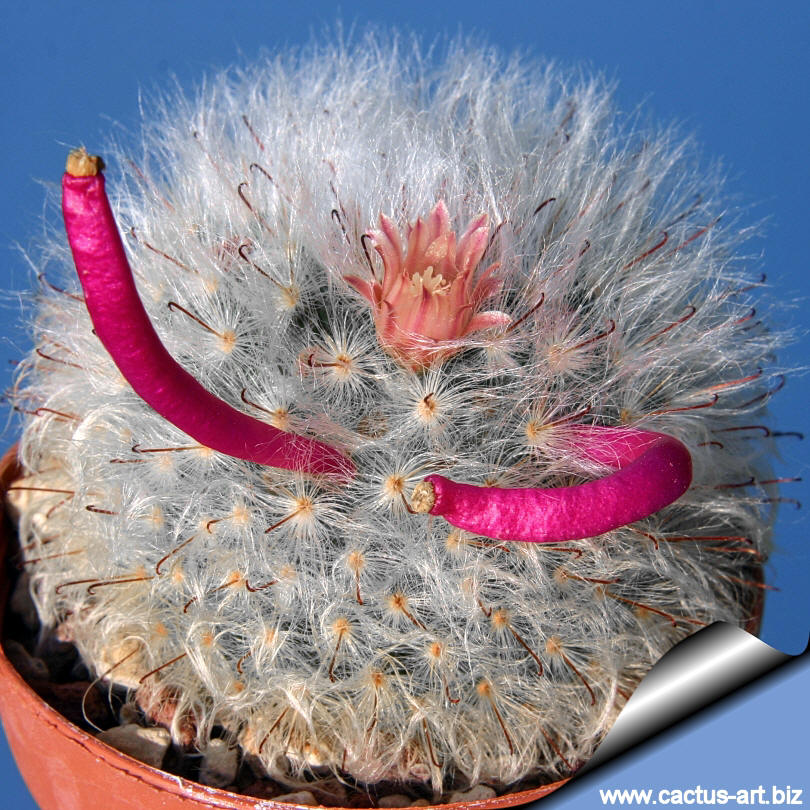
M. bocasana var multilanata has round soft stems with an extreme
abundance of white woolly hairs and short hooked central spines.
|
|
Description: Clumping
cactus.
Stems: Blue-green up to 6 cm in diameter, spherical, sometimes
becoming somewhat cylindrical.
Spines: Radials 50-10 (or more numerous), white, hair-like, 8 -
20 mm long, with one, occasionally two, short hooked centrals , reddish
brown, 5 - 10 mm long.
Flower: Funnelform, creamy yellow to pale pinkish, 13 - 22 mm
(0.5 - 0.9 in) long, to 15 mm (0.6 in) in diameter in spring and summer.
Fruit: Cylindrical, rosy-pink to red 2,5 cm long in summer.
|
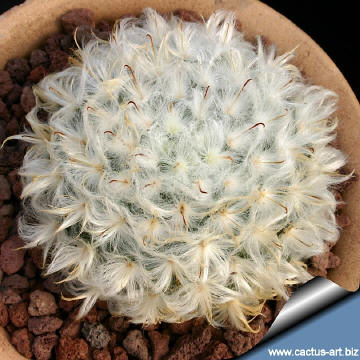 |
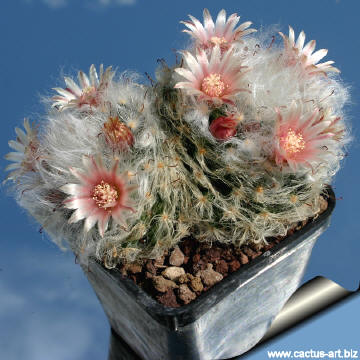 |
.
|
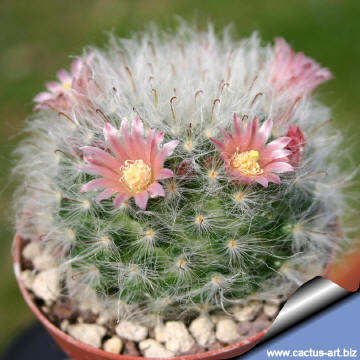 |
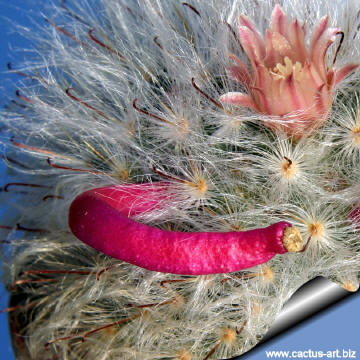 |
.
|
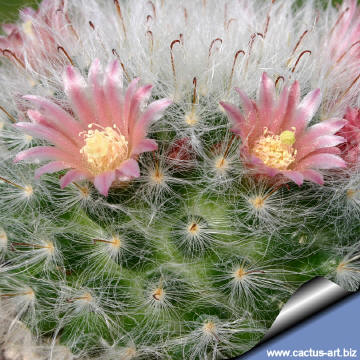 |
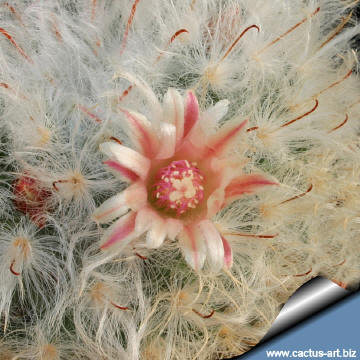 |
|
Advertising
|
|
|
|
|
Family:
Cactaceae (Cactus
Family) Mammillaria
bocasana var multilanata
Hort
This is an horticultural name not
validly pubblished
Scientific Name:
Mammillaria
bocasana
First description by Poselger, Allg. Gartenz 21: 94 (1853)
Common name:
Powder Puff Cactus snowball cactus; powderpuff cactus; fishhooks.
Origin:
Garden origin
(Nursery produced cultivar)
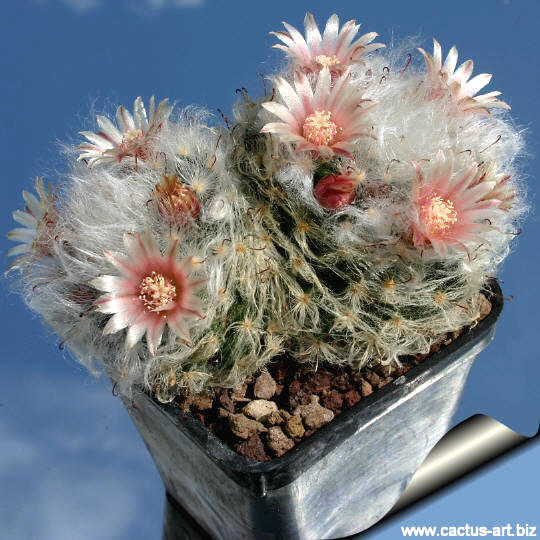
|
|
|
|
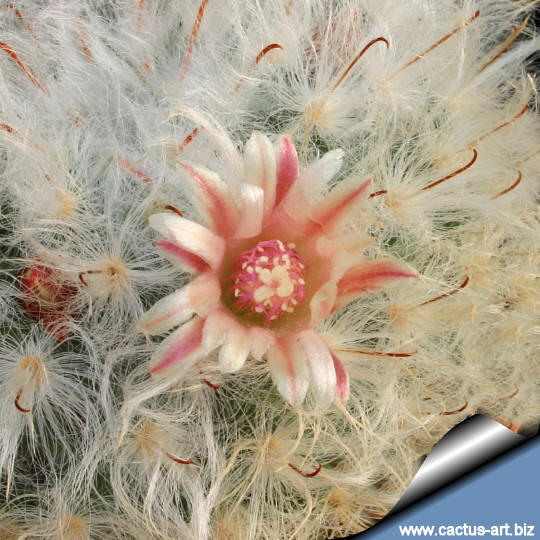
The flowers are cream/yellow or pinkish, in spring.
Cultivation: It is a
relatively rapid growing species
of easy culture, recommended for any collection, it doesn't require any
special treatment. Water regularly in summer, but do
not overwater (Rot prone)
Use pot with good drainage and a very porous potting media,
keep dry in winter.
Feed with a high potassium
fertilizer in summer.
It is quite frost resistant if kept dry, hardy as low as -5° C (some
reports give it hardy to -5°C)
Sun Exposure: High levels of light are needed to
flower and for good spine development.
Can be sunburned if moved
from shade/greenhouse into full sun too quickly. During the spring it
may be able to take full sun until the heat arrives at the end of
spring. In an area that has hot afternoon sun, it may be able to take
full morning sun, but requires afternoon shade or afternoon light shade.
If grown correctly, it will reward the grower with generous
displays of purple flowers.
Clustering in cultivation after several years and easily flowered.
For best results, use a shallow pot, and only use the smallest
diameter pot that will accommodate the plant.
Propagation: Direct sow after last frost
(usually) or division, wait
until the
offsets that appear at the
base of old clustered
specimens
are 1/3 the size of the parent and then detach and plant.
Photo of conspecific taxa, varieties, forms and
cultivars of Mammillaria bocasana.


|
|